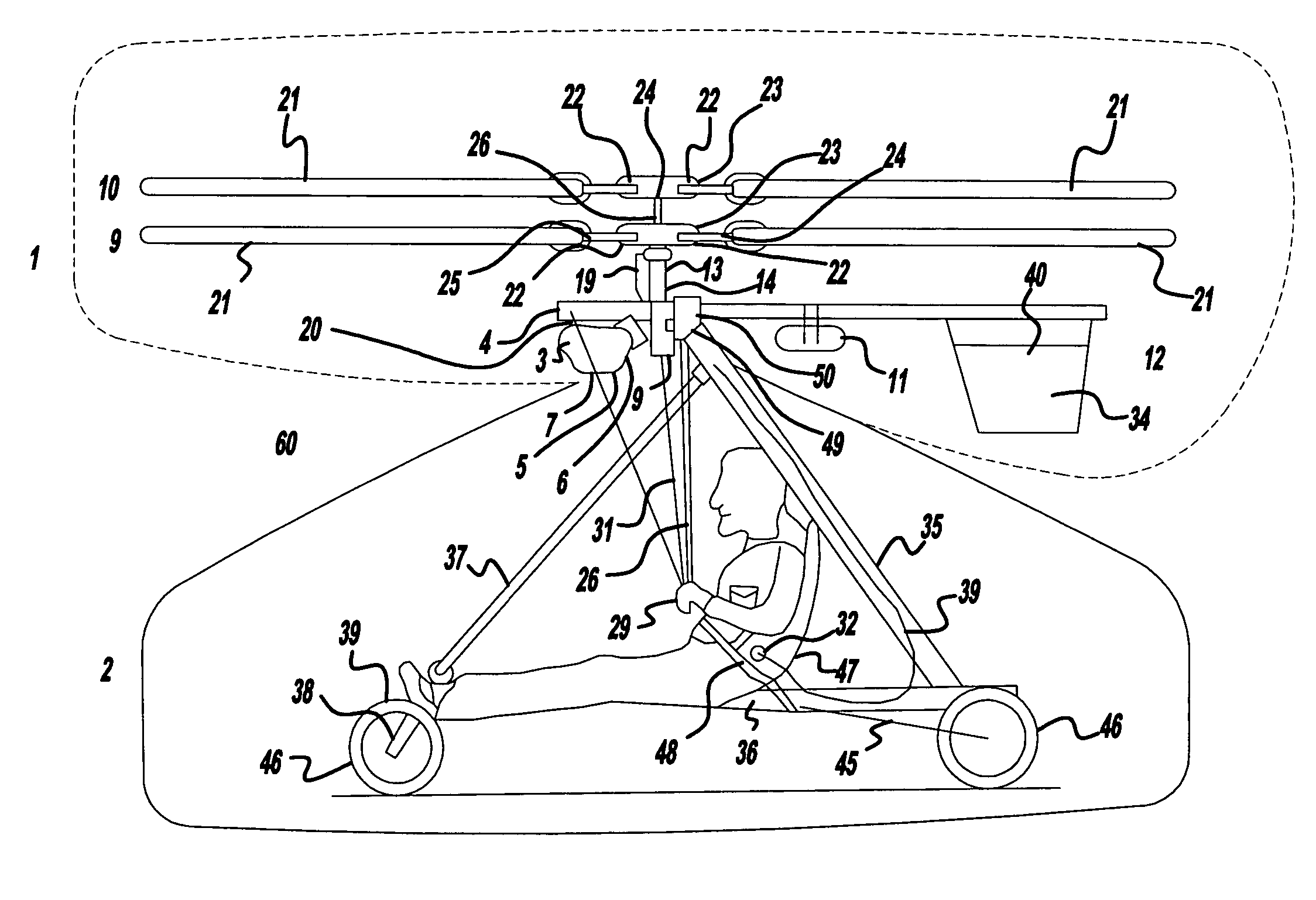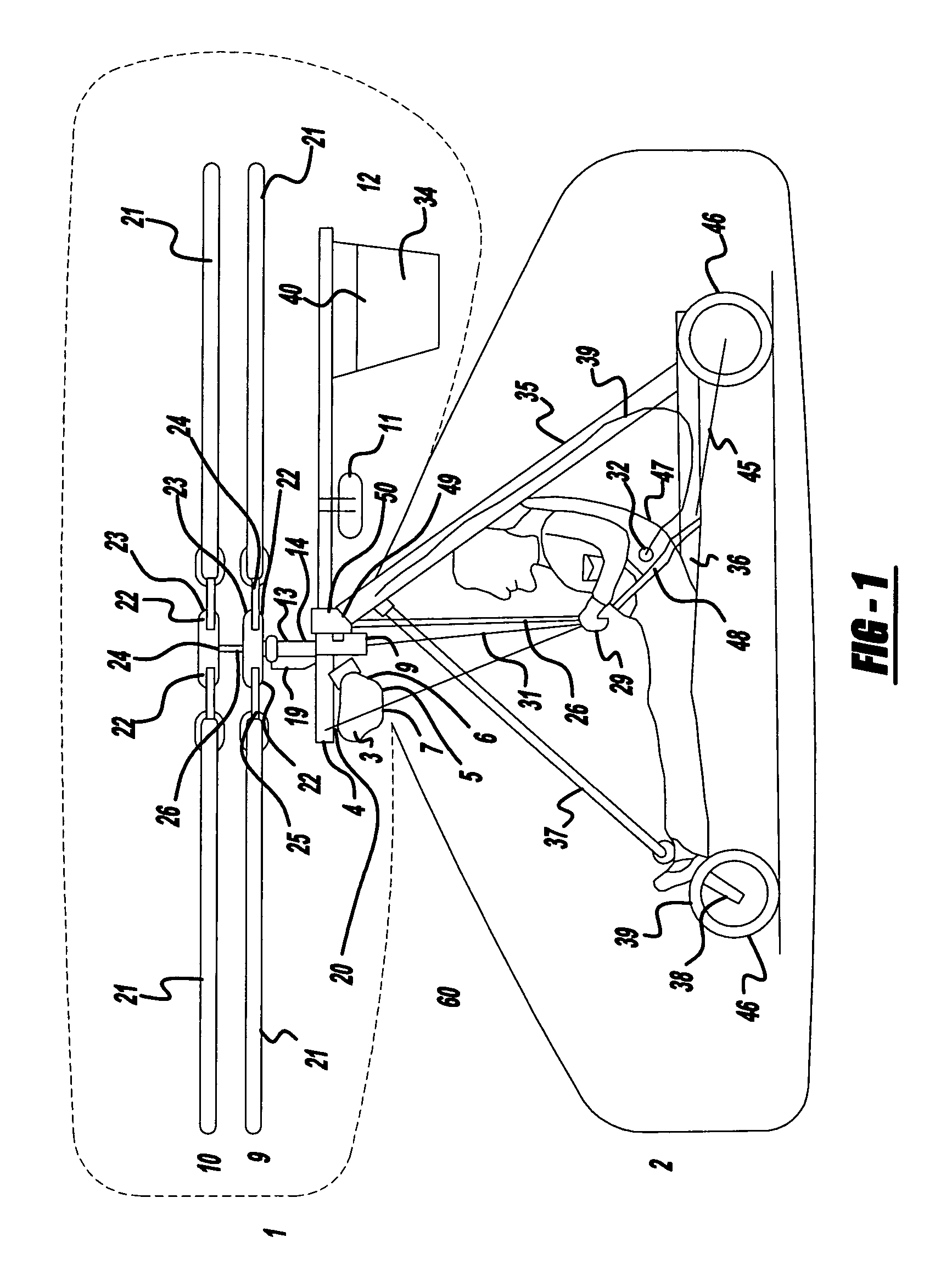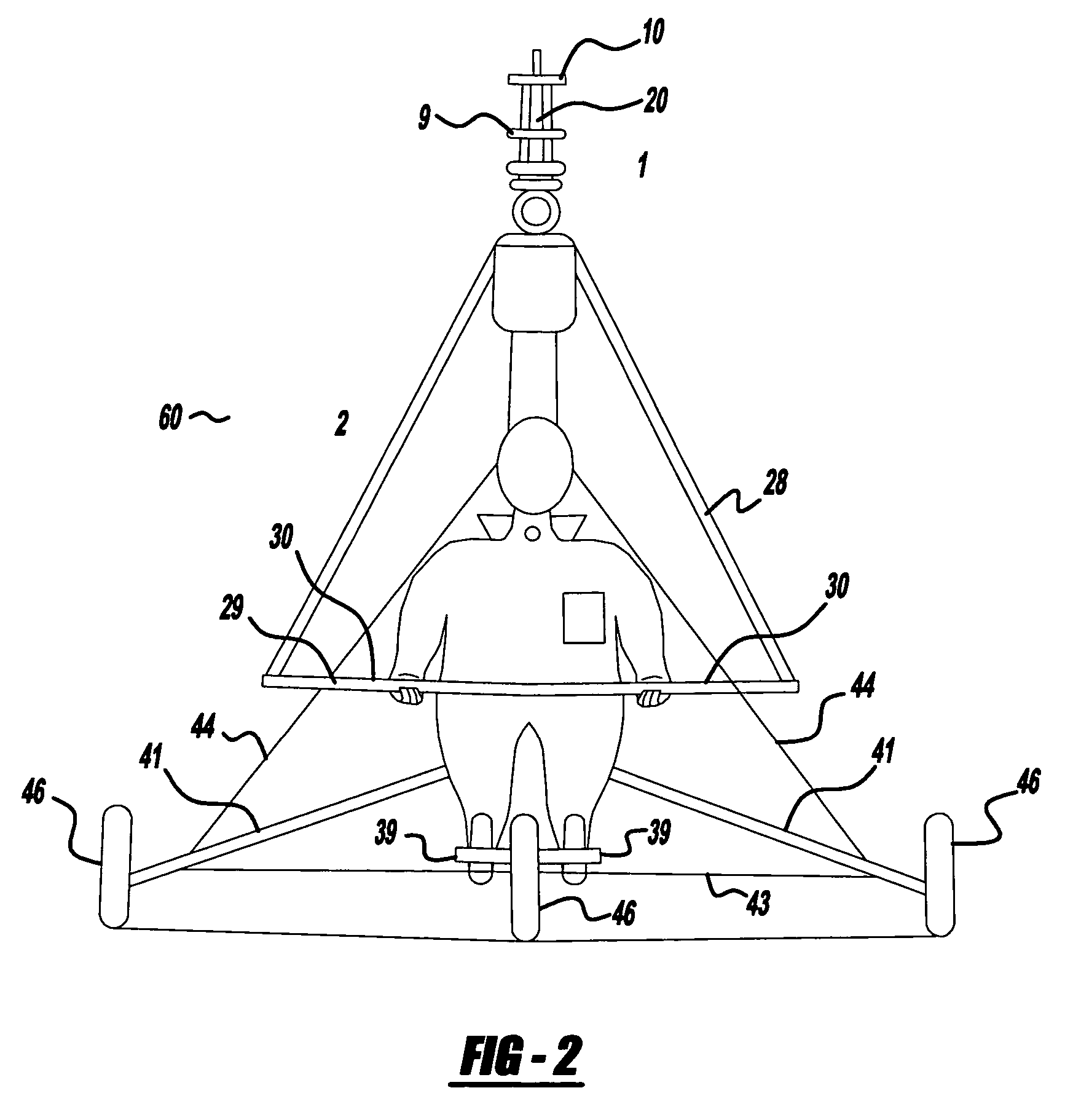Lightweight helicopter
a light-weight, helicopter technology, applied in the direction of microlight aircraft, hang glider aircraft, propellers, etc., can solve the problems of helicopters that helicopters are expensive to acquire, and helicopters are difficult to learn to operate and fly safely
- Summary
- Abstract
- Description
- Claims
- Application Information
AI Technical Summary
Benefits of technology
Problems solved by technology
Method used
Image
Examples
Embodiment Construction
[0022]The following description of the various embodiments is merely exemplary in nature and is in no way intended to limit the invention, its application or uses.
[0023]The helicopter of the present invention, as shown in FIGS. 1 and 2, comprises a rotary wing assembly 1 and a tricycle assembly 2. The rotary wing assembly 1 comprises an engine 3 with a primary gearbox 4 connected through a flexible coupling 5 and a sprag clutch 6 to a secondary gearbox 7.
[0024]The secondary gearbox 7 and the engine 3 are mounted below a keel post 8 through flexible mounts 20. The secondary gearbox 7 drives two contra-rotating rotors 9, 10. The keel post 8 also carries a fuel tank 11 and an articulated tail 12. The secondary gearbox 7, as detailed in FIG. 3, houses a pair of concentric shafts 13, 14 connected to bevel gears 15, 16. These bevel gears engage the pinion gear 17, connected through a freewheeling clutch 18 to the engine 3 through the sprag clutch 6 and the flexible coupling 5.
[0025]The ro...
PUM
 Login to View More
Login to View More Abstract
Description
Claims
Application Information
 Login to View More
Login to View More - R&D
- Intellectual Property
- Life Sciences
- Materials
- Tech Scout
- Unparalleled Data Quality
- Higher Quality Content
- 60% Fewer Hallucinations
Browse by: Latest US Patents, China's latest patents, Technical Efficacy Thesaurus, Application Domain, Technology Topic, Popular Technical Reports.
© 2025 PatSnap. All rights reserved.Legal|Privacy policy|Modern Slavery Act Transparency Statement|Sitemap|About US| Contact US: help@patsnap.com



